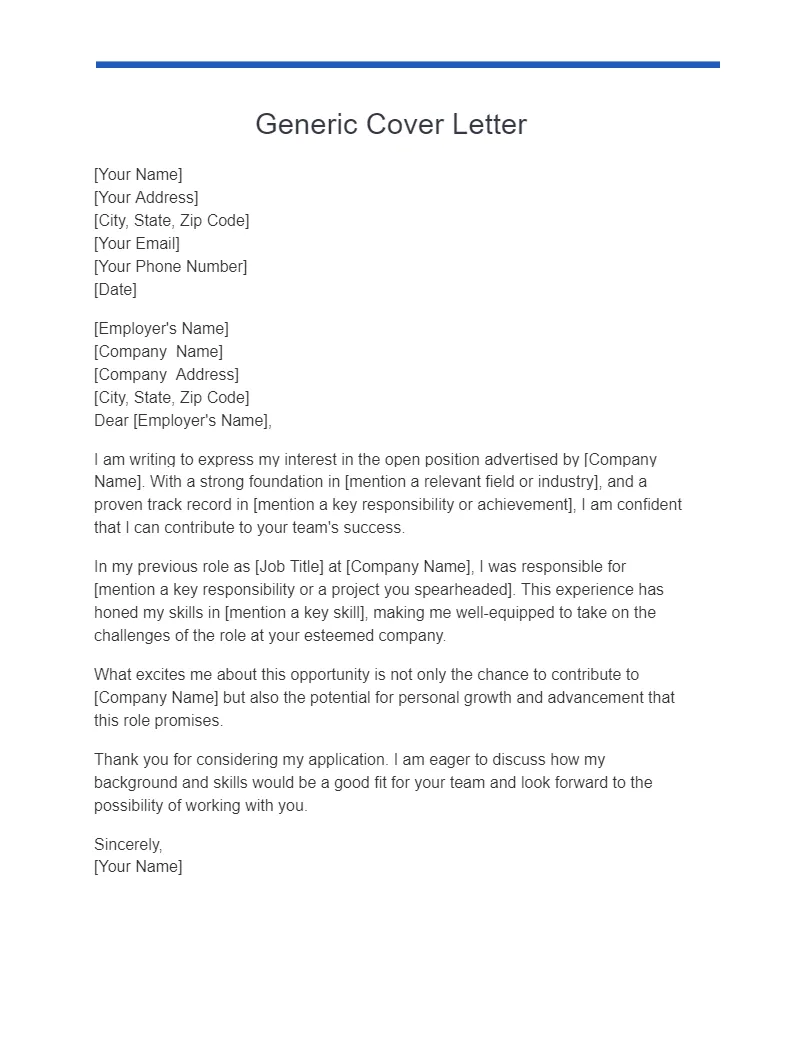Understanding the Importance of a Cover Letter
A cover letter is more than just a formality; it’s your first opportunity to make a strong impression on a potential employer. In a competitive job market, a well-crafted cover letter can be the deciding factor that sets you apart from other applicants. It provides a platform to showcase your personality, skills, and experiences in a way that your resume alone cannot. Think of it as your personal introduction, a chance to tell your story and explain why you’re the perfect fit for the job. It’s a chance to connect with the hiring manager on a more personal level, demonstrating your genuine interest and enthusiasm for the role and the company. A compelling cover letter can transform a standard application into a memorable one, significantly increasing your chances of landing an interview.
Why a Cover Letter Matters for Your Application
Your cover letter acts as your personal marketing document. It’s your chance to highlight the aspects of your background most relevant to the specific job you’re applying for. Unlike a resume, which is often a more general overview of your experience, a cover letter allows you to tailor your message, making it clear why you’re the ideal candidate for the particular position. This tailoring demonstrates your understanding of the company’s needs and your genuine interest in the role. It also allows you to address any potential concerns or gaps in your resume, proactively providing context and demonstrating your ability to overcome challenges. Furthermore, a well-written cover letter showcases your communication skills, which are crucial in almost every professional setting. It reveals your ability to write clearly, concisely, and persuasively, demonstrating that you can effectively communicate your thoughts and ideas.
Showcasing Your Personality and Skills
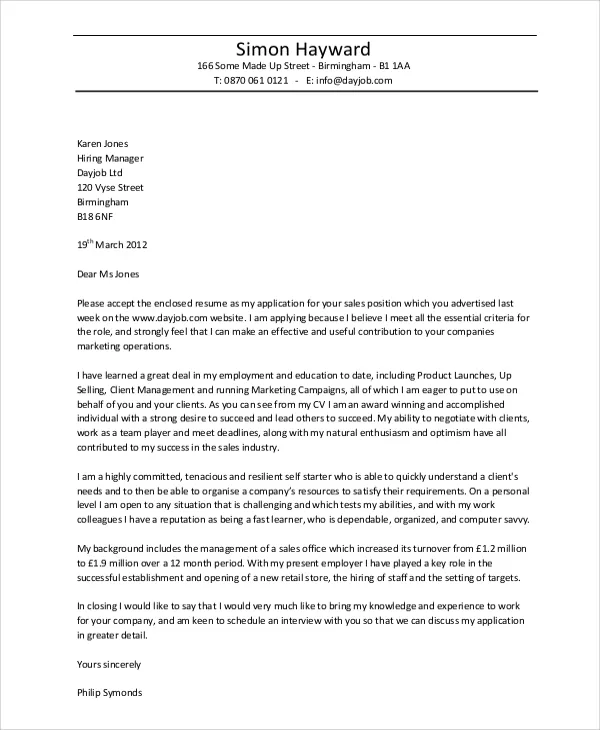
A cover letter is your opportunity to inject personality and enthusiasm into your application. While your resume presents the facts, your cover letter allows you to tell a story, expressing your passion for the role and the company. Use a confident and professional tone, but don’t be afraid to let your personality shine through. This is where you can showcase your unique skills and experiences, connecting them directly to the job requirements. Instead of simply listing your qualifications, explain how they align with the company’s needs and how you can contribute to their success. Provide specific examples of your accomplishments and quantify your results whenever possible. This will help the hiring manager visualize your potential contributions and see you as a valuable asset to their team. Your cover letter is the place to demonstrate what makes you, you.
Key Components of a Cover Letter
A strong cover letter has several essential components. It begins with your contact information, followed by the date and the hiring manager’s contact information. Next comes the introductory paragraph, which should immediately grab the reader’s attention and state the purpose of your letter. The body of the letter should highlight your relevant skills and experiences, providing specific examples to support your claims. Tailor this section to the job description, emphasizing the skills and experiences that align with the company’s needs. The closing paragraph should express your enthusiasm for the opportunity, reiterate your interest, and include a call to action, such as requesting an interview. Proper formatting, including clear paragraphing, a professional font, and correct grammar and spelling, is crucial for creating a polished and professional document.
Contact Information Essential Details
At the top of your cover letter, include your full name, address, phone number, and email address. Make sure your email address is professional. Directly below your contact information, include the date, followed by the hiring manager’s name, title, and the company’s address. If you don’t know the hiring manager’s name, research it on LinkedIn or the company website. Addressing the letter to a specific person shows that you’ve taken the time to learn about the company and the role, making a positive impression right from the start. If you cannot find a specific name, use a general greeting like “Dear Hiring Manager.”
The Introductory Paragraph Grab Attention
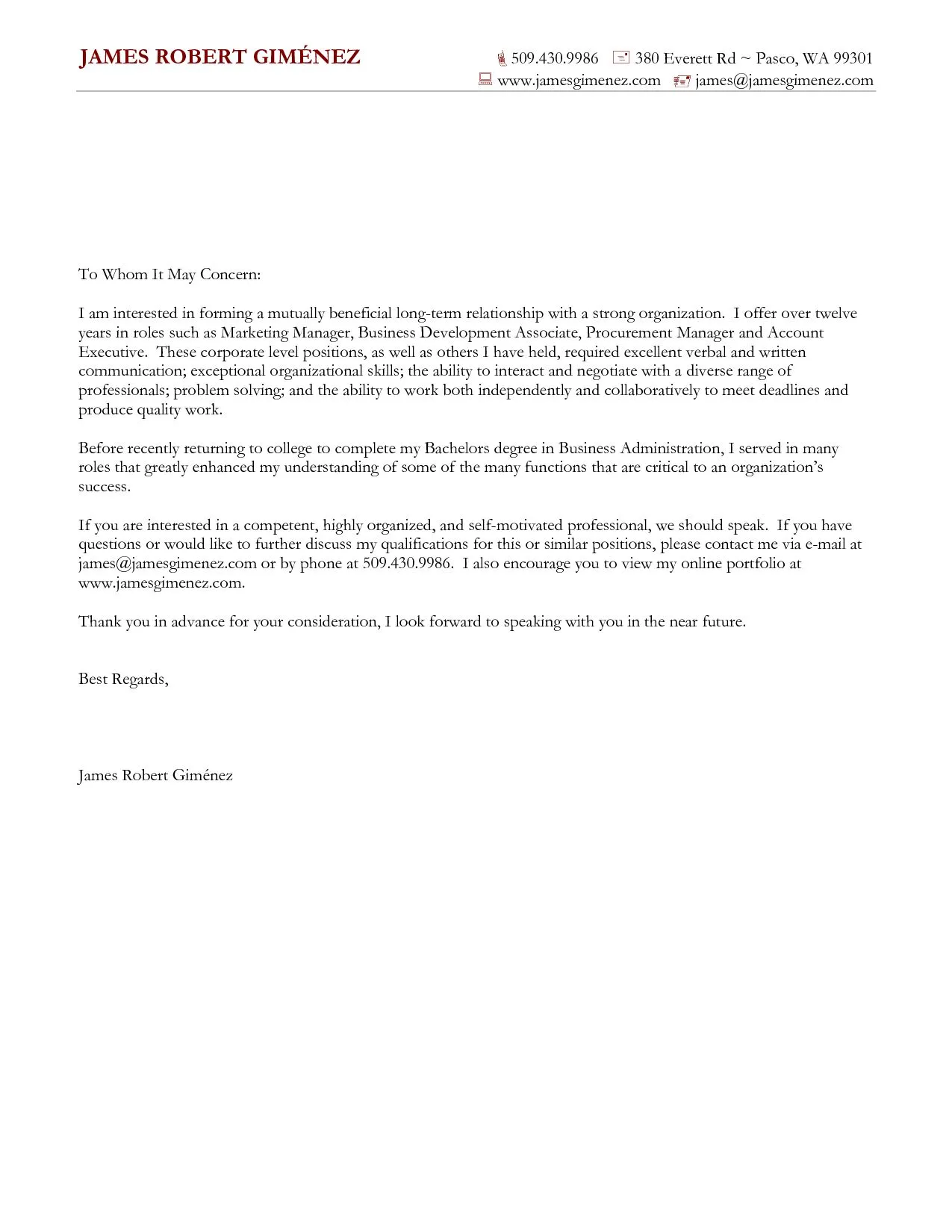
Your introductory paragraph is your first and often only chance to make a great first impression. Start with a strong hook that grabs the reader’s attention. This could be a statement about your passion for the company, a brief summary of your key skills, or a referral from a mutual contact. State the specific position you’re applying for and where you saw the job posting. Briefly mention why you’re interested in the role and the company, and what you hope to achieve in that position. The goal is to make the hiring manager want to read more. Keep it concise and impactful, setting the tone for the rest of your letter and demonstrating your enthusiasm. Avoid generic openings; instead, personalize your introduction to make it relevant to the specific job and company.
Highlighting Your Skills and Experiences
In the body of your cover letter, showcase your relevant skills and experiences. Carefully review the job description and identify the key requirements. Then, provide specific examples from your previous experiences that demonstrate how you’ve successfully utilized those skills. Use the STAR method Situation, Task, Action, Result to structure your examples. Describe the situation you were in, the task you were assigned, the action you took, and the result you achieved. Quantify your accomplishments whenever possible by using numbers and data to demonstrate your impact. Tailor your examples to match the language used in the job description, showing that you understand what the company is looking for. This demonstrates not only your ability to perform the job, but also your understanding of the company’s values and needs. Proofread carefully to ensure that all information is accurate and relevant.
Tailoring Your Letter to the Job Description
A generic cover letter is easily recognizable and often leads to rejection. The key to writing a winning cover letter is to tailor it specifically to each job you apply for. Carefully read the job description and identify the key skills, experiences, and qualifications the employer is seeking. Then, use your cover letter to address these requirements directly, highlighting your relevant accomplishments and experiences. Use the same keywords and phrases from the job description to show that you understand the role and the company’s needs. Research the company and its values to demonstrate your genuine interest and understanding of its mission and goals. By tailoring your letter, you show the hiring manager that you’ve taken the time to understand the specific opportunity and that you’re genuinely interested in the role, significantly increasing your chances of success.
Quantifying Your Achievements and Results

Numbers speak louder than words. Instead of simply stating your responsibilities, quantify your achievements to demonstrate your impact. Use specific data and metrics to illustrate your accomplishments, such as the percentage increase in sales you achieved, the number of projects you successfully managed, or the amount of money you saved the company. Provide concrete examples of your successes, using data to support your claims. For example, “Increased sales by 15% in Q3” is much more impactful than “Improved sales.” Quantifying your achievements allows the hiring manager to see the tangible results you’ve achieved, making your application more compelling and memorable. This helps to demonstrate your value and potential to contribute to the company’s success.
Demonstrating Your Enthusiasm and Fit
Expressing your enthusiasm for the role and the company is crucial for making a positive impression. Explain why you’re interested in the specific position and what excites you about the company’s mission, values, or products. Research the company culture and values and align your letter with them. Show that you’ve done your homework and understand what makes the company unique. Share what skills you can bring to the team and how you envision contributing to the company’s success. A genuine expression of enthusiasm helps you stand out from other candidates and demonstrates your passion and commitment. This level of personal investment makes you more appealing to employers who are seeking candidates who are not just qualified but also enthusiastic and a good fit for their company culture.
The Closing Paragraph Making a Strong Impression
Your closing paragraph is your final opportunity to leave a lasting impression. Express your gratitude for the hiring manager’s time and consideration. Reiterate your interest in the role and the company, emphasizing your key qualifications and why you’re the best fit. Include a clear call to action, such as requesting an interview or stating that you look forward to hearing from them soon. Make sure your closing is professional and confident. Avoid phrases like “If you have any questions,” or “Thank you for your time,” instead, use phrases like, “I am eager to discuss my qualifications further in an interview” or “Thank you for your consideration. I look forward to hearing from you soon.”
Expressing Gratitude and Next Steps
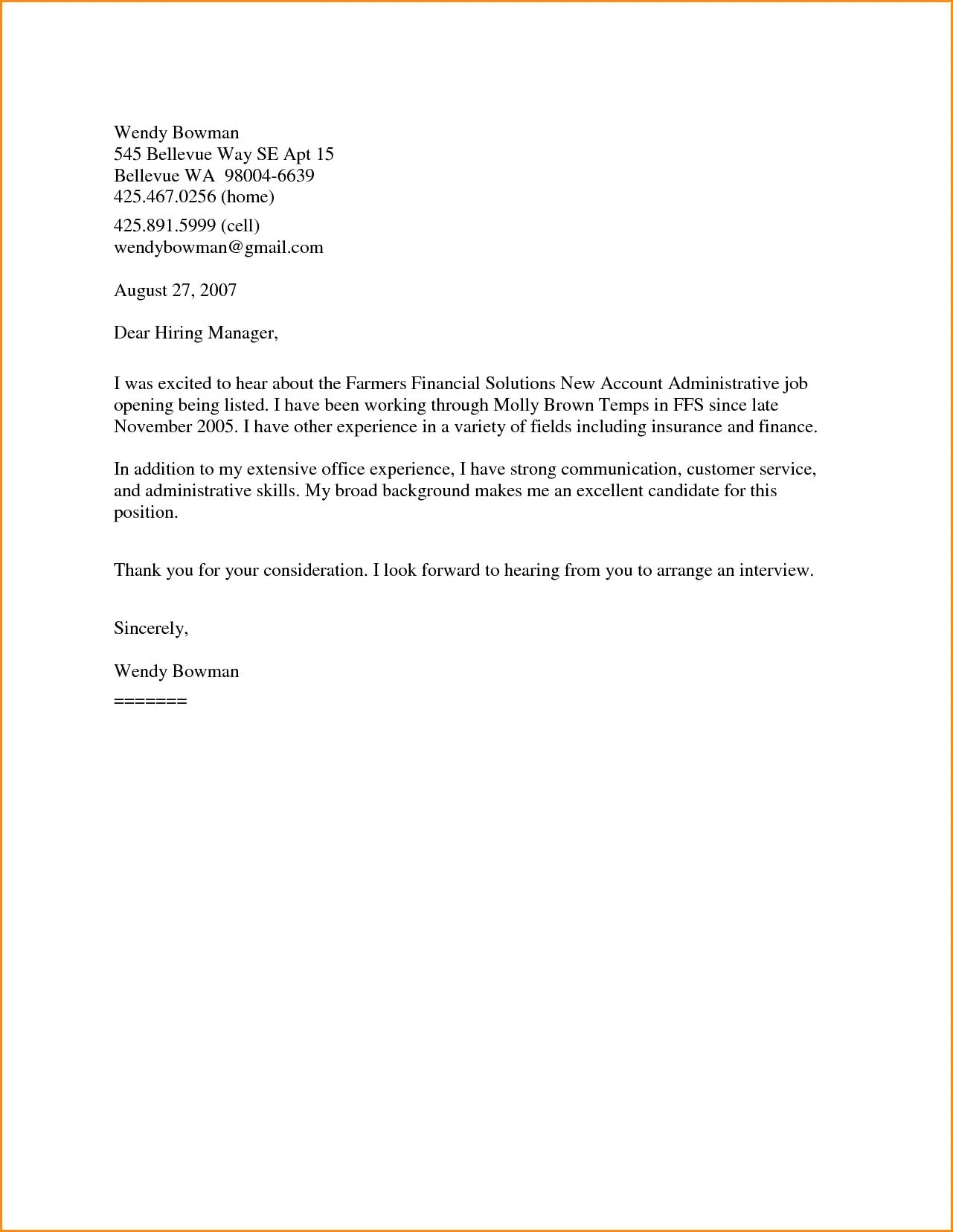
Always express your gratitude for the hiring manager’s time and consideration. A simple “Thank you for your time and consideration” is sufficient, but it’s important to be sincere. Then, reiterate your interest in the role and reiterate your contact information. Finally, include a clear call to action. Do you want to schedule an interview? Or can they reach you if needed? Indicate your availability and how you would like to proceed. Make sure to proofread your closing paragraph carefully to avoid any errors and ensure it conveys your professionalism and enthusiasm.
Formatting and Structure Guidelines for Success
Proper formatting and structure are essential for creating a professional cover letter. Use a standard business letter format with your contact information at the top, followed by the date and the hiring manager’s contact information. Use single spacing within paragraphs and double spacing between paragraphs. Use a professional font, such as Times New Roman, Arial, or Calibri, and use a font size of 11 or 12 points for readability. Keep the letter concise, typically no more than one page. Proofread carefully for any errors in grammar or spelling. A well-formatted cover letter demonstrates your attention to detail and professionalism, making a positive first impression on the hiring manager.
Font Selection and Readability
The font you choose can significantly impact the readability and professionalism of your cover letter. Opt for a professional, easy-to-read font such as Times New Roman, Arial, or Calibri. These fonts are standard, widely accepted, and readily available on most word processors. Ensure the font size is between 11 and 12 points to ensure the text is easy to read. Avoid using overly decorative or unusual fonts, as they can make your cover letter look unprofessional. Maintain consistency throughout the document, using the same font and size for the body text, headings, and any other elements.
Paragraph Length and Clarity

Keep your paragraphs concise and focused. Aim for paragraphs that are no more than five to seven sentences long. This ensures that your letter is easy to read and digest. Use clear, concise language to convey your message, avoiding jargon or overly complex sentence structures. Each paragraph should have a clear purpose, focusing on a specific aspect of your skills, experiences, or enthusiasm. The use of bullet points and numbered lists can help break up large blocks of text and highlight key information. This ensures the reader can easily grasp the core message and key highlights of your application.
Proofreading and Editing Ensuring Accuracy
Proofreading and editing are crucial steps in ensuring your cover letter is error-free. Carefully review your cover letter for any grammatical errors, spelling mistakes, or typos. Use a grammar checker to catch any errors you might have missed. Read your cover letter aloud to catch awkward phrasing or unclear sentences. Ask a friend, family member, or career advisor to review your letter for feedback. A well-proofread cover letter demonstrates your attention to detail and professionalism. Errors can undermine your credibility and lead to your application being overlooked. Take the time to thoroughly proofread and edit your work before submitting it.
Common Mistakes to Avoid
Several common mistakes can significantly weaken your cover letter. Avoid these errors to ensure your application stands out for the right reasons. Poorly written cover letters show a lack of attention to detail. They can cost you the job, and sometimes future opportunities with that company. Make sure to take your time to make it perfect.
Generic and Vague Statements
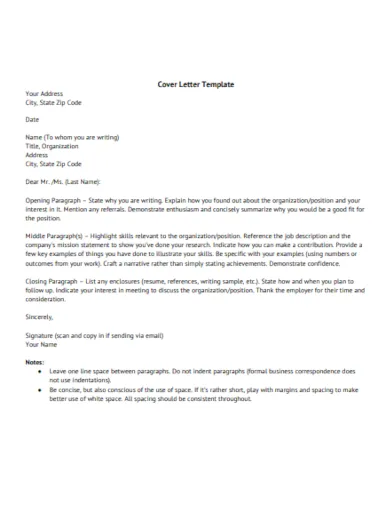
Avoid using generic and vague statements that could apply to any job. Instead, tailor your letter to the specific job and company. Highlight your relevant skills and experiences, providing specific examples of your accomplishments and how you can contribute to their success. Demonstrate your knowledge of the company and its needs. Avoid using general phrases like “I am a hard worker” or “I am a team player.” Instead, provide concrete examples that demonstrate these qualities. For example, “Managed a team of five to complete a project ahead of schedule and under budget.” This approach makes your letter more compelling and memorable.
Typos and Grammatical Errors
Typos and grammatical errors can immediately damage your credibility. Proofread your cover letter carefully for any spelling mistakes, punctuation errors, or grammatical inconsistencies. Use a grammar checker, but don’t rely on it entirely. Read your letter aloud to catch awkward phrasing or unclear sentences. Ask a friend or family member to review your letter. Ensure your cover letter is polished and professional. A cover letter with errors demonstrates a lack of attention to detail, which can lead to your application being overlooked.
Ignoring the Job Description
One of the biggest mistakes is ignoring the job description. Carefully review the job description and tailor your cover letter to address the specific requirements. Highlight your relevant skills and experiences, using the same keywords and phrases from the job description. Avoid submitting a generic cover letter that doesn’t align with the job requirements. Show the hiring manager that you understand the role and the company’s needs. By tailoring your letter, you demonstrate your genuine interest in the opportunity and increase your chances of success. Always remember the job description is your guide for crafting the perfect cover letter.
Cover Letter Examples for Different Job Types
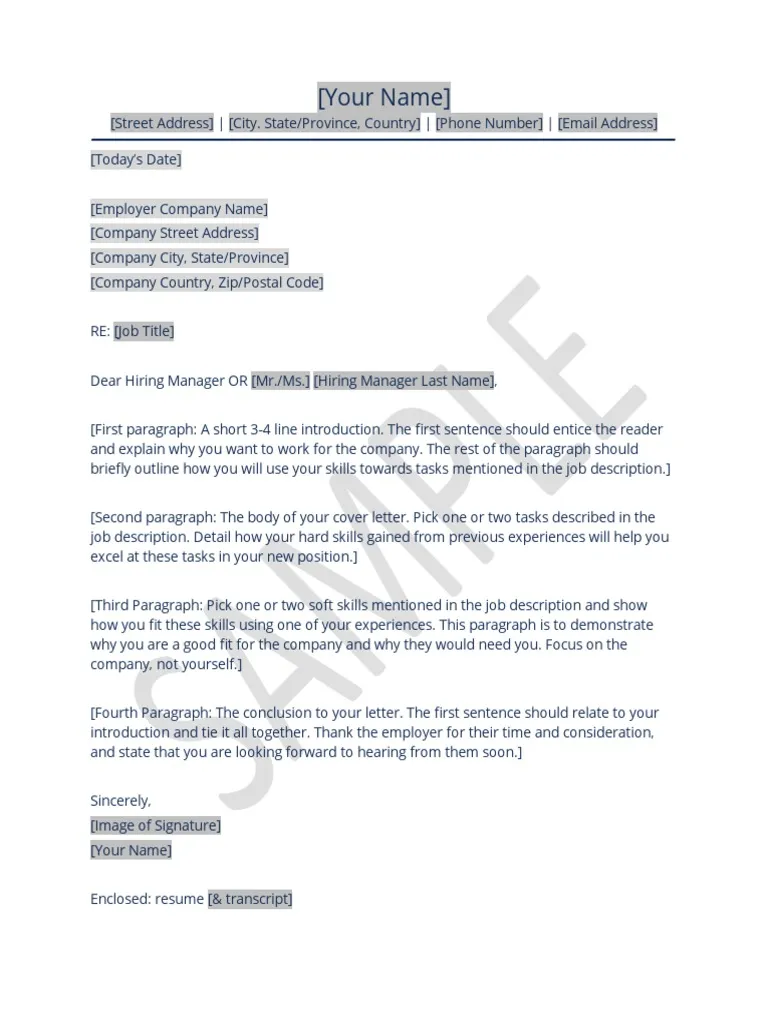
Different job types may require different cover letter approaches. Tailor your cover letter to the specific industry and the expectations of the role. For example, cover letters for creative roles, such as writing or design, may require a more creative and visually appealing approach. Research industry standards and guidelines to ensure your cover letter meets the expectations of the specific field. Examples for different types of roles include those for a recent graduate, a career changer, and a senior level role. The more you are able to adapt your cover letter to the specific needs of the role and industry, the more likely you are to land the job.
